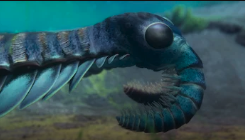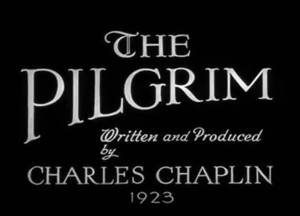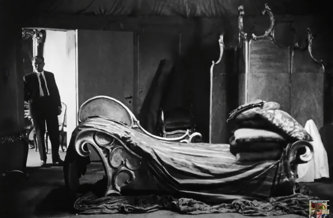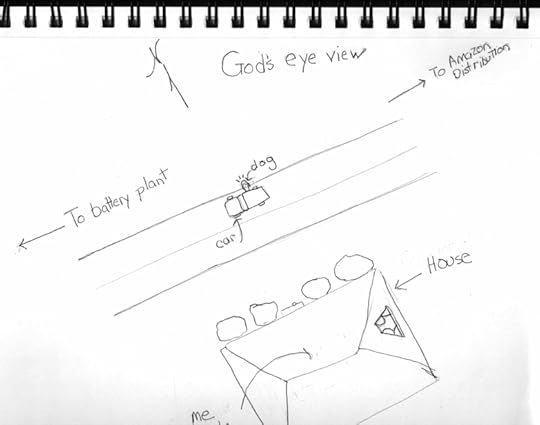Sue Lange's Blog
July 9, 2024
“Life on Our Planet” offers Ancient Wildlife and Evolution: A Spectacular Nature Series on Netflix

Ever since the late 70s, when on Sunday nights the place to be was at home watching PBS, I have loved nature shows. At that time PBS’ Nature had surpassed Marlin Perkins, Wild America, and even National Geographic in terms of stunning cinematography.
I’d always liked animal shows, and Jacques Cousteau’s specials were never-to-be-missed, but Nature was in a class by itself. It may still be, but I’ve left television shows far behind. Once I graduated college and joined the real world, life became too busy and, frankly, more interesting. Somewhere in the 80s I stopped watching completely.
Then came the Aughts, Netflix, and extra time on my hands. Life changed. Binge-watching was in. Independent movies became available. And TV evolved far beyond the networks.
Recently I’ve returned to nature shows. It started with “My Octopus Teacher,” depicting the relationship between one human and a soulful octopus. I cried. Then I discovered David Attenborough. He’s been busy and I’ve had a hard time catching up. Now there’s Morgan Freeman’s distinct voice explaining evolution, and Spielberg executive producing “Life On Our Planet.” Imagine the advanced tech work of Jurassic Park as back drop for a documentary story spanning billions of years. That gives you the idea. “Amazing” doesn’t do it justice.
The fantastic visuals include beasts that I had here-to-fore never heard of, let alone seen images of. Apparently our planet has experienced five mass extinctions, not just the one from the asteroid that killed all the dinosaurs. This series brings to life all those previous eras and the prehistoric animals and plants that inhabited them.
It’s not just the usual suspects: stegosaurs, brontosaurs, and T. Rex. We find terrabirds, smiladons, myasaurs, and so much more. The series starts with the first single cell we supposedly all came from. From there the first episode did a quick round up of what’s been happening since that lonely blob, accentuating the rules of life: 1) the fittest, i.e., best adapted, will survive; 2) there is competition between species as well as between individuals within a species; 3) Earth never stays the same so habitats change and pressure mounts. Go back to rules 1 and 2 to see the result. It all boils down to this: when conditions change and food gets scarce, only the ones who can adapt will survive.
 Anomalocaris, (“weird shrimp”) one of the earliest predators ever known.
Anomalocaris, (“weird shrimp”) one of the earliest predators ever known.The story goes back and forth between prehistoric epochs and modern times. We see how and where the ancient ones lived. And died. Interspersed are episodes of modern animals that inhabit the same niche as the older extinct animals. Like how ages and ages ago, anomalocaris was the apex predator, while today Carcharodon (shark) rules the sea. It’s a great way to illustrate what went on long before we arrived, giving us a chance to see what we could otherwise only imagine.
The series is filled with fun facts, such as how moss ruled the planet for 40 million years. That’s a lot of time before plants evolved beyond a single layer! Earth was seemingly covered with nothing but a big green carpet.
The images of the ancient animals are a bit herky jerky in the same way the dinosaurs in Jurassic Park don’t move in quite a natural way. It stands out compared to the actual footage of today’s animals, but you do get a good feel for how things looked.
If nothing else, the series gives one hope for the future. There have been numerous mass extinctions in the past, and life survived. Presumably then, the one we are undergoing right now will one day pass as well. Hopefully we’ll be able to ride it out, but one never knows.
 Anchiornis, one of the earliest birds, still half dinosaur at this point.
Anchiornis, one of the earliest birds, still half dinosaur at this point.The show is educational and extremely beautiful. What a combination! I look forward to watching it all again. Probably tomorrow. Just because I can. It’s the 21st Century, after all: whatever I want to consume is available, 24/7.
Fun fact: the mnemonic to memorize the six names of the periods of the Paleozoic Era (Cambrian, Ordovician, Silurian, Devonian, Carboniferous, Permian) is “clammy oysters slide down Cathy’s pockets.” See how much fun Paleontology is! Thank you Mr. Bowen and Intro to Geology 101 for that.
Go enjoy some graphics of the home planet from a time long before you or anyone else was ever born.
Sue Lange, author WE, ROBOTS (or, How I learned to love the robot overlords).June 25, 2024
Vintage Slapstick Comedy: Rediscovering The Pilgrim by Charlie Chaplin

When I was a kid, I hated slapstick. I was way too sophisticated for the pie in the face, the poke in the eye, the foot in the can of paint. But then one day my family moved to within broadcast range of channel 9 in Chicago. WGN. An independent station serving a large, urban population that apparently loved old movies. Or maybe old movies are all this independent station could afford. Anyway they showed old black and whites often. It was a link to a different time and style of film that was way beyond The Stooges and cartoons featuring a coyote running off the edge of a cliff.
Those old movies introduced me to the kings of physical comedy. Of course you know I mean The Marx Brothers. Who else? In my humble, but truly intelligent opinion, they are the best of all those old-time rowdies. They offer so much more than a piano falling from the second floor onto a hapless bystander. They were fresh and full of surprises, with great wordplay. They were physically dexterous, clever, worldly. In other words: who really knows why I loved these guys. It’s like pornography, I don’t know what makes great slapstick, but I know it when I see it.
During this time, I knew of Charlie Chaplin, but hadn’t seen anything besides the odd clip here or there of this funny-walking little man with a mustache. He didn’t impress me, but then, his full films were unavailable at the time. I suppose this was due to the ban. He was (Gasp!) a commie after all, and he and his films had been shunted off to the cornfield.
Then along came Youtube in our post-paranoid, post-modern times. We are no longer afraid of the red menace. Or maybe it’s just that the wild, wild Internet could care less about politics, and there’s little regulation. Whatever; we are now allowed to peek at the subversive little man’s work. And since I’m no longer in WGN’s broadcast range, Youtube is where I go to feed my addiction to the classics.
Which is how I stumbled across the Chaplin gem entitled “The Pilgrim.” It’s a delightful little film that had me laughing out loud. I rarely do that when I’m alone. Laughter is something you experience with friends. Like tickling or getting drunk. Laughter is a way of communicating with others. It’s like saying, “Did you see that? I mean, did you see that?!” You’re sharing in a way words never can. It’s knee jerk: a reaction to something incomparable, never-before-seen, and truly sublime.
Because it’s better shared, you don’t usually laugh out loud when you’re alone. Something has to be outrageous for that. And there’s this one instance in “The Pilgrim” that is just that.

In this scene, The Tramp (Chaplin’s signature character) is an escaped prisoner posing as a minister. He’s been invited to the home of a fine upstanding parishioner where pious friends and family have gathered. Someone’s child of about 3 or 4 is present and has just discovered how much fun it is to slap adults in the face. He plies his new discovery on everyone in the room. They can’t slap back, of course: he’s a child. And as is typical of exhausted and jaded parents, his mommy is ignoring the situation.
Everyone puts up with the child’s antics. They’re not little love taps either. The kid actually knocks one guy off his seat. Hats and rugs go flying into the air. This child is possibly the most obnoxious one you’ve ever seen. And that’s saying a lot, as children are, by nature, obnoxious.
It reminds me of a dinner party I once attended. One of my friends brought a five-year-old who had the annoying habit of grabbing food off everyone’s plate. She’d use her grubby fingers to take a fistful of green beans or mashed potatoes or whatever, and stuff them in her mouth before moving on to the next guest. Mommy would say, “Sarah, honey, that’s not nice,” and Sarah would laugh. You get the picture: nauseating.
Watching that scene in the Chaplin film was excruciating in the same way that Sarah grabbing my green beans was. It was supremely annoying until, when no one else was looking, Chaplin back-kicked the child across the room. I howled. Applauded even! Of course, I tsk tsked hypocritically. I do not tolerate child abuse under any condition. Still it felt so good to see that kid flying through the air.
Go watch the film. Keep your sanctimonious, sophisticated judgments to yourself and enjoy the schadenfreude. Would love to hear what your favorite scene in the film is. Or any Chaplin film. I’m up for discovery.
Sue Lange, author We, Robots (or where all this AI is going)
June 18, 2024
Your Honor: Slow-Burning Drama with Compelling Storytelling

Every once in a while television surpasses itself and reminds me that there is actually some good stuff out in La La Land. Not a lot, but enough to keep me going back for more. This time out I’m wowed by “Your Honor:” two seasons on Showtime and now available on Netflix.
Like in “Breaking Bad,” Bryan Cranston plays an Everyman faced with losing his soul to save his family. The first few episodes are painful to watch as you witness him climbing up the slippery slope that comes with his covering up a hit- and-run accident. He keeps making decisions that get him deeper and deeper into the shit. I shouted at the tv, “Don’t do it. Don’t do it.” But alas, the writers of La La Land ignored me.
In “Your Honor,” Michael Desiato is a well-respected, honorable judge, who goes above and beyond the duty of the robes to get to the truth. In the first scene he has uncovered a lying police officer by visiting the scene of a so-called crime, and unearthing proof that the accused could not have done it. Desiato seems more detective than sitting judge here.
But after years on the bench, Desiato loses his way when it comes to his son, Adam (Hunter Doohan). Adam has hit a motorcyclist who subsequently dies from the injuries. Desiato is on his way to turning in his son to face the consequences, when he discover the boy who was killed was the son of a local mob boss. The die is cast. Desiato must evade the law to protect his son. It’s a horrific situation straight out of shock TV, but is told in a way that makes it more real than the sordid reality shows ever are.
The trick here is that the show is painfully  . That’s “slow ” in all caps with a red background. Why is slow a good thing? Well, let me tell you:
. That’s “slow ” in all caps with a red background. Why is slow a good thing? Well, let me tell you:
I’ve just completed a binge-watch of all 10 years’-worth of “The Blacklist,” where there were two FBI shootouts per episode, fifteen senseless murders per season, countless creative torture scenes, and at least one jaw-dropping twist a day. It was Action with a capital A.
Why did I watch such a mindless show? Two reasons. First, James Spader was fantastic. His character was the complete opposite of that in “Sex, Lies, and Videotape,” where he was an uncomfortably sensitive young man with a single weird fetish who fell in love. In “Blacklist” he was glib, confident, and with countless weirdities. The dialog was delightful much of the time, and he got the best lines, delivering them with impeccable timing and verve.
The other reason I kept watching was that I believed Reddington somewhere along the line, had had a sex-change operation from when he was actually Elizabeth Keen’s mother. The show never fully copped to that and instead it went on and on and on for too long. The last few seasons were so excruciating that seeing Reddington gored at the end actually made me happy so I could return to the real world.
“Your Honor” was a welcome change from all that. It’s Slow with a capital S and that rhymes with “F” and that stands for “Fabulous!” There are only a few deaths in this series, and each one is profound and important to the story; not just some way to show off the work of the special effects lab. These passings affect the other characters, and in turn have an effect on the viewer. As the secrets unfold — as they always do in long-running series — things take turns for the worst, pulling you in and making you wonder in the words of Tom Waits, “how’s it all going to end?”
The cast alone makes this show worth viewing. In addition to Cranston, Isaiah Whitlock (The Wire) and Margo Martindale (August: Osage County) show up as they almost always do these days. I wish they both would get meatier roles; they deserve it. Hope Davis is an annoying stereotype: a wealthy bitch straight out of a soap opera. Lilli Kay is adequate as the daughter of a mob boss ignorant of her father’s dealings. Andrene Ward-Hammond and Keith Machekanyanga, as Big and Little Mo respectively, deserve special mention. Their understated performances as they dealt in the drug underbelly of New Orleans were great to watch. I hope there are more seasons with these two getting additional screen time.
The whole cast is great, but the standout actor is Michael Stuhlbarg as a conflicted criminal. He plays his cards close to the vest, and yet somehow you can read the torment in his glistening eyes and contorted smile/frown. Rarely does a mob guy have such a nuanced style. This is not Scorcese territory; it’s reality.
Carmen Ejogo gets a nod for her solid performance. She’s not just a pretty face with an attitude. She’s a complicated character: she harbors a pedantic devotion to the law, but nevertheless when desperate, asks a key witness to lie on the stand.
I love stories that take place in New Orleans. We don’t see a lot of them, but they invariably include great music. The final song of the season had me running to the Apple Music app to buy “Make it Rain,” by Jor el’ Quinn. Unfortunately the only version at the app is by Foy Vance, the originator of the tune. It’s a good version. I bought it. If anybody has an mp3 of Quinn’s though, I’ll give you five bucks for a copy.
In the meantime, take a look at the show on Netflix. The story involves a criminal empire, but refuses to serve up the usual excesses of that type of world. It’s about heart-wrenching decisions one must make concerning one’s child. And in the end it’s all to no avail. Just like real life.
–Sue Lange, author We, Robots
June 4, 2024
Dr. Mabuse: From Silent Era Fascination to Modern Relevance in Film Criticism

I encountered Dr. Mabuse in the 1958 book, “Film as Art,” written by Rudolf Arnheim. I’d found this little gem in a used book store across the street from the Eastern State Penitentiary in Philadelphia on which I’d been writing a piece at the time. The penitentiary is an odd place, creepy in its decommissioned state. Al Capone was incarcerated there once. His cell has been preserved with his comfy bed, tasseled lamps, writing desk. I guess he was a man of letters. Just joking. His cell looks quite habitable and I can understand why people are turning old jails and prisons into destinations. These places are right up there with weighted blankets in their therapeutic claustrophobia-induceingness. I guess. At any rate, they’re all the rage now .
Although published in 1958, the essays in this book were written in the early 30s and so they’re a look back at what the experts had to say about film technique in those early days. The author mentions an interesting shot in Dr. Mabuse. It’s a sort of manual zoom-in. I wanted to see what he meant, but he doesn’t specify which Dr. Mabuse. There are three made by Fritz Lang of Metropolis fame alone. And countless other versions by other directors. Apparently the good doctor was quite popular, but I had never heard of him.
And that’s a shame because Dr. Mabuse turned out to be quite the delight.
I found the first two Lang films on Youtube. Dr. Mabuse the Gambler is a silent made in 1922 and is 4 ½ hours long. Yikes! In this film we see Dr. Mabuse in various disguises as moves through his enterprises: a counterfeiting operation where the workers are locked in a vault, card gambling, and encounters with a famous vaudevillian who is under his spell. Through it all Dr. Mabuse uses his strange powers of hypnotism to get what he wants.
The Testament of Dr. Mabuse from 1933, was a mere two hours in length. Since I was mostly just looking for a certain filmic technique, I opted to watch this one, hoping I could spot it in this later version. In this film Dr. Mabuse’s various activities are carried out by a gang of thieves, one of whom is a good guy trying to redeem himself. We never see Dr. Mabuse. He gives his orders from behind a curtain.
I was blown away from the very first scene of Testament when I saw the jumping lamp shades, bottles, and cabinetry, an effect I suppose signifying the setting was in an industrial area. Or maybe it was near the train tracks. Dunno, but it was lovely.
I usually expect old films to be dreary: poorly lit, silent, with stilted dialog and over acting. This film was not that. It was captivating with beautiful special effects, lighting, and sets. And sound! I should not have been surprised. It’s Fritz Lang after all.
There’s one scene that makes viewing this film worth it, even if you’re not fond of old films. Let me set the stage for you. Do you remember Guillermo del Toro’s Shape of Water ? It won four Academy Awards, including Best Picture, in 2018. There’s a fantastic scene where the main couple are trapped in a bathroom. They stop up the drains and cram a towel at the crack of the door. They open all the water spigots and the room fills with water. At the last moment the door bursts open and the contents of the room gush out.
It’s a beautiful scene almost certainly stolen from Jeunet et Caro’s Delicatessen, released back in 1991. Here the main couple trapped in a bathroom stop up the drains and cram a towel at the crack of the door. They open all the water spigots and the room fills with water. At the last moment the door bursts open and the contents of the room gush out. Find a quick comparison of these two show-stopping scenes here.
I still marvel at the water busting through the door and cascading down the spiral staircase. This is why I go to the movies: so I can see somebody do something I would love to do but can’t. Who wouldn’t want to turn their home into a swimming pool?
Delicatessen is one of my all-time favorite films and that scene might be the reason why. Imagine my delight when the scene showed up at the crisis point in The Testament of Dr. Mabuse. I marvel at the director’s chutzpah. How did he do it way back then? Nowadays everything is CGI and nothing is impossible. Back in 1933 if you wanted a room filled to the brim with water, you had to hook up the fire hose and hope the camera stays dry.
So I loved the second film and decided to take a crack at the first one. Like I said: it was four and a half hours long. And it was silent and murky like those old-time movies are. Nevertheless, I found it to be as delightful as the later film. Is it overwritten? Yes. Could it be shorter? Sure. Does the story make sense? Not really, but then horror stories never do. I couldn’t figure out the mechanism for hypnotism. There was no looking at the gold watch, stripes on the bed, or as in “Little Britain,” Kenny Craig repeating “Look into my eyes, look into my eyes, look into my eyes,” in satiric rapid-fire.
In neither of the Dr. Mabuse movies is it clear what it is that makes the victims do Dr. Mabuse’s bidding. He seems to be sending nefarious thoughts through the ether. Or something. In the second movie, the incredulous is carried to the extreme when the good doctor, who has now gone insane and in fact died, is controlling his one-time psychotherapist through a set of left behind notes. I love nonsense like that. It’s so impossible it has to be true.
The first film tends toward a German Expressionist style. Not quite like Dr. Caligari, but in the interiors you see improbable furniture, wall art, and accoutrements. It’s all dark, angular, and weird. With a great sound track!

There’s this one image that sticks with me. Dr. Mabuse stands in the doorway of a darkened room. We can just see the outline in the foreground of…something. Then he switches on the light and you see a marvelous, opulent Art Nouveau bed. It looks like a sleigh that might carry a load of baby Cupids. It’s a fantastic scene and I WANT THAT BED!!!
I could go on and on about these films created during the chaos of Germany post WWI. I’m not an expert on social commentary, but I saw this character — who seems motivated by nothing but a desire to spread confusion and possibly the end of civilization — as a sort of maniacal political beast. Dr. Mabuse himself seemed confused as to why he was doing what he was doing. He had good thoughts and bad thoughts, but he didn’t know why. A true mad scientist: pure evil, yet oddly self-aware.
Dr. Mabuse’s fictional mantra seemed to be “destroy the world; it’s messed up.” And then surprise! Along came Hitler to try just that. He said he was inspired by the punitive Versailles Treaty. Perhaps the true story is he was under Dr. Mabuse’s sway.
I’m joking of course, but this all brings to mind our modern day bloggers on the Internet, intent on riling up the peoples for the sake of more followers, hits, and likes. These blatherers spread fear and panic, only because they can and it’s good for advertising revenue. People, calm down! Use your common sense. Do not be a victim of those looking to control you! You are being hypnotized as part of some Internet content provider’s manifesto. No one is worshipping the devil or eating babies. The opposition party is not part of a powerful cabal looking to take over/destroy the world.
Creators have been making this stuff up since before Dr. Mabuse, but with the advent of TV and the Internet, these ridiculous ideas have gone virally bonkers. You all need to stop looking at your phones for a few minutes. At least once a day, go outside, check your surroundings. There’s no man in the high tower, no smoldering ruins. Just sunshine and flowers. Take a breath of God’s air. Relax.
If you truly are afraid to go outside, take a break from the madding crowd and watch the Mabuse films: Dr. Mabuse, the Gambler (Might want a couple of sessions for that one), and The Testament of Dr. Mabuse. Maybe you’ll find something more believable than what you’re reading on your favorite polemical site.
Speaking of films, my pal Santo has a new one he’s cooking up: Il Mio Posto a Tavola. It’s a documentary about his journey through the issues of abandonment and loneliness that come with adoption. Check ‘er out.
See you at the movies.
Sue Lange
Author, We Robots, a story of AI
May 21, 2024
Civilization: A Bath in Bedford Springs

Looks like I’m going to be blogging again. I guess I missed it. For a time a few years ago, I wrote a regular column for my local newspaper — The Reading Eagle. I went out every week and found something to do. For a small city of 80,000, it was sometimes hard to do. I ran out of things after a while. But I miss the assignment. Since the world is bigger than 80,000, I’m finding a few more things these days.
I love the places that make me feel like I’ve stumbled onto a different time; or maybe into a movie. I just returned from just such a place: Bedford Springs Resort located somewhere in the vicinity of Altoona and Johnstown, PA. You’ll recall the latter from its famous flood. Not sure you would have heard of Altoona, but with a name like that, you should have. It’s right up there with Katmandu, Timbuktu, and Kalamazoo. All places that deserve to be visited just for the name.
So I got off the train at Altoona and found an Uber headed south for Bedford.
First off, train travel itself is a step back to a more civilized time. People, we have got to get out of our cars! I curse the decision-makers who had the passenger line tracks torn up. We in America remain ignorant of the pleasures of train travel. If you haven’t done it, get thee to Europe. You will not want to come back to a world devoid of mass transit.
Beyond the train, the trip to Bedford Springs was a reminder of a kinder, gentler time. A time of Maugham, Proust, and Agatha Christie. A time when people took the cure and dressed for dinner. Nowadays people snort coke and wear flip flops to the Rainbow Room. What happened to class? Savoir Faire? The cravat?
You can see from the historical photos plastered all over the walls in the hotel how we used to dress: Men in pants instead of baggy shorts; women in straw hats and puffy sleeves. Having fun meant sitting with friends at the spring, or picknicking on the croquet lawn with bottles of wine and checkered blankets.
Nowadays people come in twos and stick to themselves. No more secret meetings in Combray, France. Proust rolls over in his grave. Maybe in the height of the season, families will come for the cornhole games and firepit in the evening, but in May there were no illicit rendezvous.

The dining room in 1796.
The food at Bedford Springs is impeccable. We tried three of the eateries: A tavern (Frontier), steakhouse (1796 – named for the year the resort was founded), and high-end yummy (The Crystal Room). I can’t say a bad thing about any of them. The menus are not extensive, which is actually a good sign. When I sit down in a new place, I worry when the menu is several pages long, offering everything from souvlaki to lobster to grits. It’s not possible to do a good job on every cuisine. Specialize, people! Even the most mundane Chines takeout place serves a good egg roll.
Bedford Springs comes at a price, of course. Resorts are never cheap. And they are designed to get more of your hard-earned cash than you plan to spend. You’re bombarded with offers of upgrades, topping off an already great experience. There are things to buy at inflated prices (a single swallow Scope mouthwash cost over three bucks). There are things to do here that are more expensive than at home. Full body massages start at $220. I can get one for less than a hundred at home.
But you’re on vacation. You only live once. When will ever get a chance to…? The money flies from your wallet.
 The cooling dip.
The cooling dip.We opted for the ritual bath. For just under $100 you get a day’s worth of mineral soaks, deluge showers, cooling dips, and complimentary Q-tips. It was exhilarating and well worth the money. Robes, shower shoes, combs, brushes, towels, wash cloths, soap, shampoo, access to hair dryers, etc. all available for free. It was self-pampering at its best.
Afterwards, you sit on the porch with a generous supply of fruits and nuts at hand. All this for as long as you like. I sat and dreamed of another, more civilized, time when people came for meetings with secret lovers, or conversations with Proust’s aunt, or maybe Somerset Maugham himself. I was there to get away from my life, so the dreaming came easy.
Today with all the multi-tasking we do, a trip to Bedford Springs should be on your bucket list. Save your pennies! When you get a bunch, book a room and a train ride. Download the Uber app and pack your bathing suit.
Maybe you’ll meet me there; I’m definitely going back.
See you in the hot tub,
Sue LangeSue Lange is the author of culturally-aware satire. Her AI novella, WE, ROBOTS, is available on Amazon and the publisher’s website: Aqueduct Press.
May 14, 2024
Review: A Man in Full

Haven’t been blogging much lately. Not a lot going on I suppose. The More Human Than Human Anthology (2017, Night Shade Books) which includes my WE, ROBOTS novella might get translated into Russian. Considering the world is going ape shit for AI, this little story of mine is right on time. Besides this possible windfall in rubles, not a lot moving me these days.
Imagine my surprise then, when the new Netflix flick, A MAN IN FULL, blew me away. Jeff Daniels as blowhard real estate mogul, Charlie Croker, really shines. Compare that to his DUMB AND DUMBER TO role. Same guy. Seriously? And Tom Pelphrey as mealy-mouthed Raymond Peepgrass is so icky to watch, you can’t look away.
Other standouts include Bill Camp as a vindictive bank exec and William Jackson as an ambitious Atlanta mayor. Loved watching both these guys in smaller roles. It’d be great to see what they would do on the screen together. Could they go after bad guys and save the world? Yes, they could. I’m not sure who would be the straight guy, though.
Sarah Jones plalyed a typical blonde trophy-wife, but she showed some spine, enriching what would normally be a standard stereotype.
There are no good guys in this film. Croker is the protagonist and Peepgrass the antagonist, but really, you don’t root for either one of them. They’re both unlikable. I assumed the filmmakers were creating a Trump parody, but I couldn’t tell which side of the divide they were on. Croker is loud, rude, and somewhat dim. But he showed his lovable side throughout as he urged his personal attorney (Aml Ameen) to fight the good fight for his secretary’s husband (Jon Michael Hill), rotting away in jail on a trumped up charge. To be honest that side story seemed a bit forced. We get you, filmmakers, you’re trying to show Croker’s softer side. His femininity. Right.
The filmmakers were not so kind to the Peepgrass character. This one-dimensional angry man appeared creepy more than anything else. No subtlety whatsoever. Not sure if that’s the director’s fault or the actor’s. Either way, no redeeming qualities here.
Fortunately there was Jackson and Camp to break up the all too familiarity. But there weren’t enough surprises and fun scenes. There was that one with Croker wrangling a diamondback. And later he was seen in a pet museum filled with live snakes. No actors were hurt in the making of this film, I assure you. I’m not sure what all that was about, but it was fun to watch.
The film is a kind of detective story. With only bad guys, who is going to win in the end? I was baffled throughout. And then came the end, redeeming the entire exercise. That is when I realized this was an allegorical story. These cardboard characters are standins for a moral, or life lesson.
Kudos to Netflix for bringing out this kind of film. The modern American audience is too dimwitted to recognize the subtlety, the subtext. I can’t thank the producers enough for giving us a film with a DEEPER MEANING.
It’s not until the final scene when you realize what this film is about. It’s not about Trump’s bumbling in real estate. Nor some sort of plot against him. It’s about the polemic. The divide. The way we have gone too far off the deep end with our unquestioning loyalty to a party of choice, a world-view. We’ve lost our Americanity. We can no longer see those who disagree with us as Americans. We hate them all. And it will kill us.
Make no mistake, our political process is under attack. We used to at least respect someone who was on the other side, even if you didn’t agree. Not so, anymore. Because of that, our process will surely fail as we sink into civil war. You and your intolerance will be to blame.
Who do you hate? I suggest you cross the aisle and shake hands with whoever they are. Or we’ll all end up on the bedroom floor in a tacky mansion, the life choked out of us. Metaphorically speaking. I hope.
Thank you, Netflix, for the allegory. I get it.
March 21, 2024
Review: Train to Busan

I posted this review a few years ago on the A PERFECT YOU blog and recently I came across it on my hard drive and decided to repost. Reading through it reminded me of how much fun this ridiculous-in-a-good-way film is.
Here it is with grammar and sentence structure improved (yay!)
There was a time when I wouldn’t be caught dead watching a zombie flick. (Ha! Dead) Things have changed now, though. The cinematic wonder known as TRAIN TO BUSAN (2016) has come into my life. No idea how it got into my Netflix queue, but I’m glad it did. Have you seen it? You need to. It’s hilarious. It’s the most fun I’ve had since my next-door neighbors turned into blood-sucking vampires.
It’s a South Korean film directed by one Yeon Sang-ho. This is not just a horror movie. There’s a heart-felt father-daughter story going on. Rounding out the pathos is a pregnant lady and her gallant husband, and a crazy homeless guy who is repeatedly on the brink of being locked in the zombie car but is always saved at the last moment. The real draw, though, is the cast of extras of Demille proportion. And if there were an Academy Award for extras, these people would win it.
Here’s the zombie premise for this film: you get bit and a few moments later you are flinging your body around in a blind rage that defies both human anatomy and the immutable laws of physics. You are blind, but somehow perceive light. You are thrown off the train and land with your arms pulled out of their sockets. No matter, you carry on. You snarl and slather like a rabid dog. You have an uncontrollable desire to bite necks of non-zombies. You run in an ever-increasing nation of others like you.
There are scenes in this film that rival the state-room scene in the Marx Bros. “A Night at the Opera” for unabashed silliness. It just doesn’t seem like they could squeeze more people into the pile, but they do. And they’re all snarling and slathering away. If they’re not worming a way into the pack, they’re jumping at, off of, or under, the moving train to get at a chunk of virgin flesh.
The extras are mostly young and athletic. They’d have to be to carry off the mix of St. Vitus’ Dance, Tourette’s Syndrome, and dance fever these zombies are afflicted with. It must have been a blast to make. There’s nothing more fun than overacting in foolish ways, especially if you’re young and sexually frustrated as the young often are. No better way to channel that pent-up energy than in a high-budget Asian disaster flick. Fine job Yeon Sang-ho!
I now have an open mind about the zombie apocalypse. (Ha! Open mind) I’m on board (Ha! On board) with it. I get it.
Bring on the un-dead!
P.S. There’s a sequel called PENINSULA (2020). Go see it. Yeeha!

November 3, 2023
Blessed are the Cheesemakers*

The results are in and we have a winner: Norway’s Nidelven Bla . It comes to us from a little family farm about a few hundred kilometers from Trondheim, where the awards committee decides who in the world is the absolute cheesiest. It sounds fishy, but I’m quite sure the cheese is not. Nidelven Bla is a blue mold cheese with a firm, yet creamy texture, aged 11 months.
The cheese awards announcement fell into my inbox early yesterday morning. This was following a day of gluttony care of the cheese section at Wegman’s. It couldn’t have been more fortuitous. I had picked up a six-month Manchego, gorgonzola picante, something called Cello Smoky Pepper Fontal, and an Instara P’tit from France. I’ve only tried the latter so far and I must say it is heavenly: buttery with a firm texture. I hadn’t picked up any of the listed award winners mostly because Wegman’s doesn’t carry any of them. Nor does any other place in the U.S.
Importers take note! You have an opportunity here.
The Gouda Cheese Shop in the Netherlands has an “Old Amsterdam” available. The Award site listed it as “Old Amsterdam Goat.” Gouda Cheese shop’s listing didn’t include “Goat” but there is a blue-ribbon next to the name, so I assume that’s the one. You can order this cheese if you like. They’ll export a five Euro wedge for a fee of 48 euros. At that cost, I’d consider just going to Holland. You’ll get more for your money.
Other winning cheeses exist in such places as Switzerland, Germany, Austria, Belgium. Nobody from N. America, France, the UK, or Latin America placed in the ten best list. Nor did Spain. No Manchego. What?
India placed. They have an interesting entry entitled Eleftheria Brunost. It’s a “Norwegian-style whey cheese,” tasting like “salted caramel milk fudge with brilliant lingering toffee notes.” I don’t know whether I should make a toasted cheese sandwich out of it, or ice a cupcake. Either way, I’m sure it’s fantastic. At 400 rupees a pop (5 bucks) I’d love to get some, but I don’t have a trip to Mumbai in my immediate future.
Importers take note! Opportunity abounds.
Gouda seems like a very flexible cheese. You can do so much with it. The Gouda Cheese shop has Lavender Gouda, Tri colour Gouda, Black lemon Gouda, Hot Chili Gouda, Herbs de Provence Gouda. What is it about Gouda that makes it so very experiment-friendly? I’ve got to get me some of these, they’re so colorful that even if I don’t like the cheeses, I can decorate the living room with them.
I didn’t have much luck with finding any of the other cheeses here in the U.S. But it was fun searching. There’s some great food out there and I want it all.
Importers: I’m begging you. Get on the cheese ball. Your public awaits.
–Sue Lange, author We, Robots (a scathing, sarcastic, funny account of the future)
*Apologies to Monty Python for stealing that line from LIFE OF BRIAN.
September 28, 2023
True Story…Sort of

Anyway, earlier this week I was sitting at my computer when a dog went barking by on the road outside.
It was one of those wonderful days, not too hot or cold, when people drive with their windows rolled down, and their dogs hang their heads out, just waiting to get clobbered by a passing stop sign.
I live on a road that is fairly busy twice a day. It connects two cities with dense but small populations. In the morning cars rush by going either west toward the battery plant, or eastward to the Amazon distribution center. Evenings the traffic pattern switches 180 degrees as everyone heads home.
This particular day the dog went barking by at around 1pm, no doubt hanging its head out the window, ears pinned in the wind. It continued a string of barks unchanging in volume or duration, like a broken record, if you’re old enough to know what that means. The only variation was a change in pitch due to a small Doppler Effect as the car neared my home and then rushed by. It was like this:
… arf arf arf arf arf arF aRF ARF ARF ARF ARf Arf arf arf arf arf arf arf …
You get the picture.
What the heck was this dog barking at? The driver was totally ignoring the dog, his mind no doubt fixed on his flight toward the battery plant.
The incessant, unchanging barking intrigued me. It wasn’t like the dog was fending off intruders, or focusing on one single point of interest. It was just barking at the world.
I headed over to Google Translate to find out what it was all about. In the left menu I chose “the “Dog,” and “American Standard Human” in the right. Then I inserted the text of the dog’s speech. The part that I had heard anyway: arf, arf, arf,…
It translated roughly to this:
Oh my god! Would you look at that! Did you see that? It’s a frickin’ cat! Stop the car. Oh my god, there’s a dead deer in the road, right over…Holy shit, what’s that smell? Did you smell that? Oh my God! Stop the car! Stop the car! STOP. THE CAR. Thats the biggest pile of horse shit I’ve ever seen! What’s the matter with you? Can’t you smell that! Stop the frickin’…
That was what it was: the dog barking at the world. Like the first day of spring or something.
I imagined the dog at home later, talking with the cat.
Dog: Yeah, seriously. I nearly jumped out of the car. If I hadn’t done that last year and broken a femur I’d a been rolling in that stank. I just couldn’t believe Numb Nuts just kept driving. Like he didn’t even notice it.
Cat: Lame.
Dog: I kept telling him, Stop the frickin’ car. Nothing. Crickets.
Car: I hear you man. Guys got dry food for brains. Speaking of crickets. It’s getting late. I’m heading out. You want me to bring you back something? Chipmunk or baby robin, maybe?
Dog: Nah, man. Thanks. But if you think of it, when you get back in the morning, urp up something on Numb Nuts’ bed like you did last time. That was tasty.
Cat: I’ll see what I can do. Later, Man.
Dog: Later.
Anyway, I returned to my work and finished out the day a little more excited about the world.
–Sue Lange, author WE, ROBOTS

September 10, 2023
America’s Castles: Yes, they actually exist
 Ceiling column in Fonthill Castle.
Ceiling column in Fonthill Castle.Europeans, of course, scoff. As do the Far Easterners with their Great Walls and Taj Mahals. The U.S. just can’t compete; we built our castles too late. Humanity had moved on from egotistical monarchs with unlimited power over the little people who in turn give their lives and backs in the service of their overlords.
The Industrial Revolution brought education for all and the little people soon developed a healthy cynicism. They started asking questions like “Why can’t I have some of that pie?” And so the pie was shared. Sort of. At any rate, gone were the despots of old that had the resources to build ostentatious architectural beasts. The U.S. was just getting started at that point.
But we work with what we have. Military surplus magnates, California wine barons, and others of that ilk fill in for old world tyrants bent on a legacy. They’re not as powerful as Louis XIV with his Versailles or Zhu Di with his Forbidden City. Those folks had access to untold numbers of expendable peasants. Vanderbilt types are required to pay their minions. And in modern times the laws no longer allow beating one’s workers into submission. It’s just too hard to get good help now.
Therefore American palaces impress, but not by old world standards. According to Wikipedia there are 150 in the U.S. The entry for Italy alone has about 500. To be fair, builders-of-things across the pond have been around longer so have had more time to erect their castles. The things that make the list in the U.S. are often scaled down versions from the old world which work well as B&Bs. Compare that to Europe’s big-assed accommodations.
Just the same, I’m proud of our castles. They are things of beauty. I recently visited Fonthill in Doylestown, PA. This massive house of cement was conceived and built by one Henry Mercer. Mercer made his money the old-fashioned way: he was born into it. Regardless, he worked hard in his tile factory and did well way beyond his inheritance.
 Mercer tile on the floor of Pennsylvania’s capital building.
Mercer tile on the floor of Pennsylvania’s capital building.Mercer was inspired by the many trips he took to Europe and parts further east and the architecture and artwork he found there. He created what are known as Mercer tiles which adorn PA’s beautiful capital in Harrisburg. (Side note: Ever notice state capitals are in cities no one has ever heard of? Lansing, Michigan instead of Detroit; Albany, New York instead of NYC ; Pierre instead of Sturgis, South Dakota.) The Mercer tiles in Harrisburg are a stunning glazed red, with lovely pictures on some of them.
Fonthill Castle is almost entirely encased in Mercer tiles. The place is gaudy and fascinating, with amazing detailed work. I could definitely live there, but visitors get only an hour to go through the rooms which is not enough time. You’d need about 15 one-hour tours to see all that tile, let alone the nooks and crannies that lead to tiny bedrooms, nicely-stocked libraries and naturally lit studies. It’s like a fairy land or a Robin Hood movie. They do have certain times when you can go and lurk in corners without benefit of a tour guide but those times are rare.
 Vaulted ceiling in Fonthill Castle: gaudy and fascinating.
Vaulted ceiling in Fonthill Castle: gaudy and fascinating.Mercer may have inherited his money but he worked tirelessly with the energy of a monarch bent on legacy. Kudos to him for his work; we are all beneficiaries of his creative genius.
Do stop by when you’re in the neighborhood. I hear his museum, about a mile away, is also a masterpiece; and there’s the working tile factory right next door if you can’t get enough in the mansion.
 Detail of Fonthill tile.
Detail of Fonthill tile.Got stories of castles that you’ve visited? Did you stay overnight? See a ghost? Tell me about it.
— Sue Lange, author WE, ROBOTS
 Fonthill Castle, Doylestown, PA
Fonthill Castle, Doylestown, PA
Sue Lange's Blog
- Sue Lange's profile
- 19 followers



